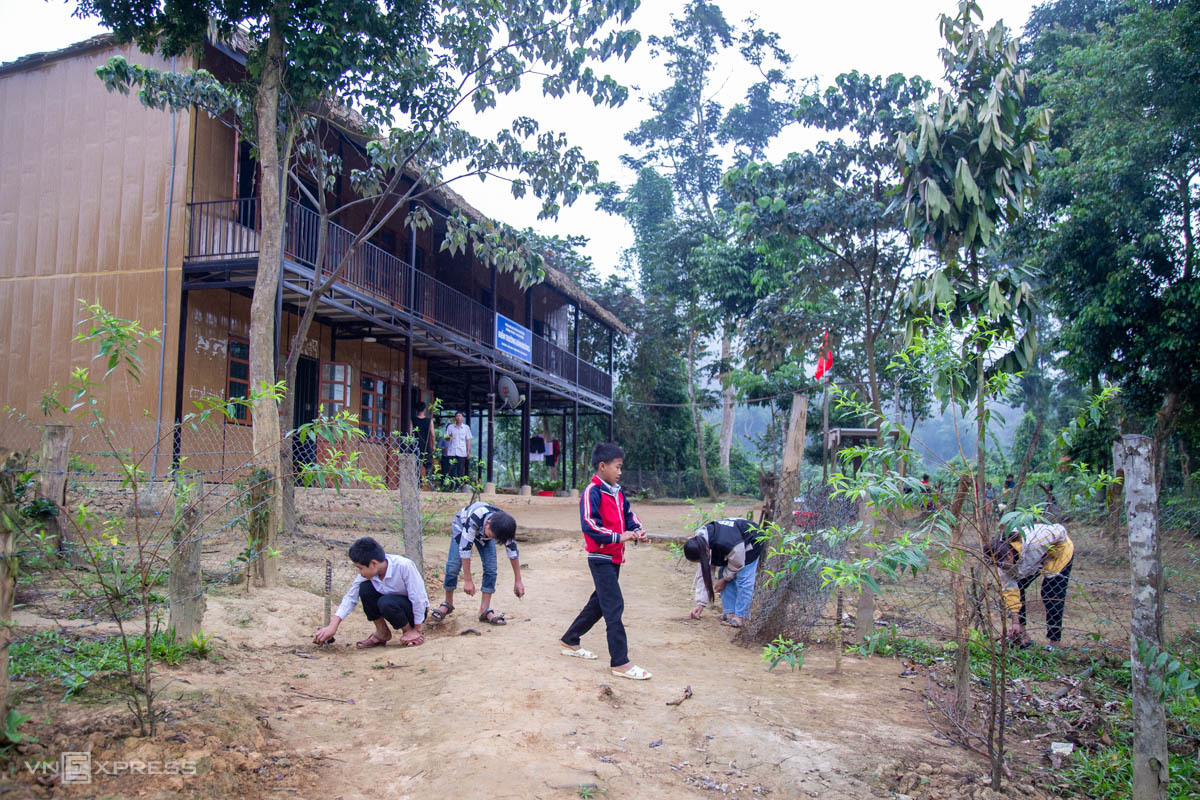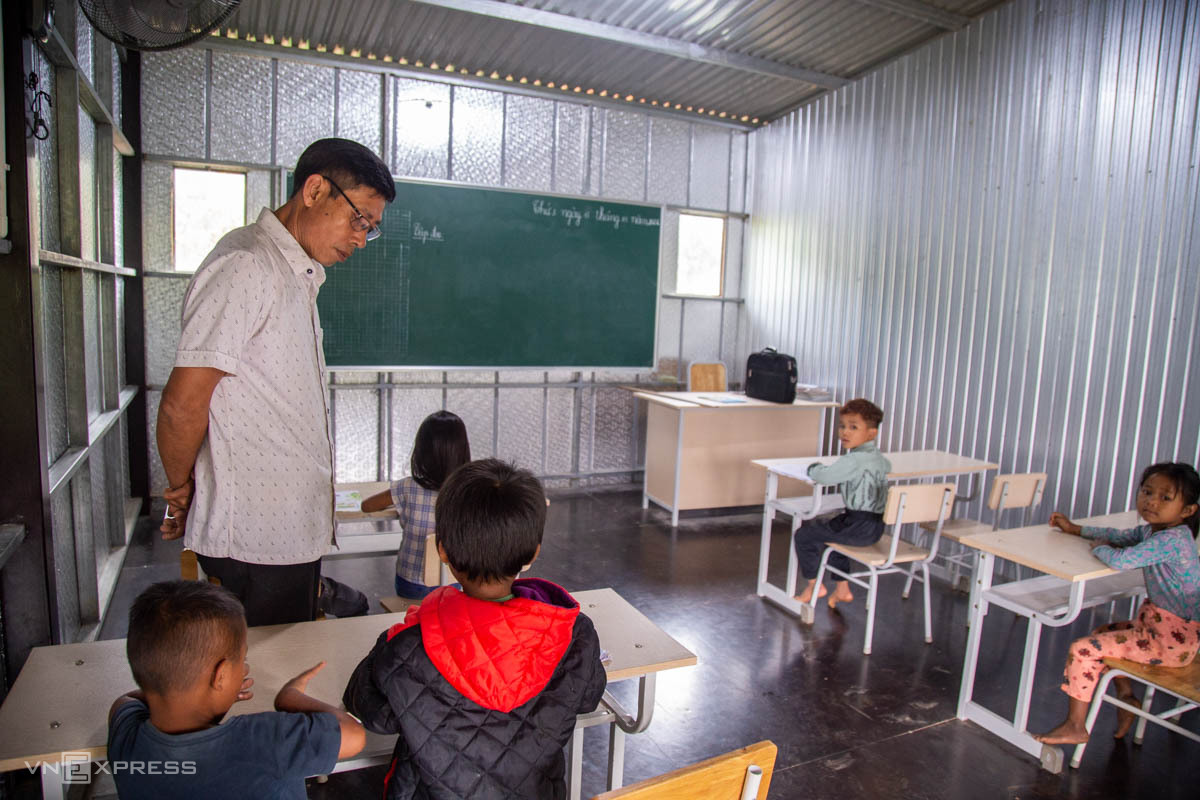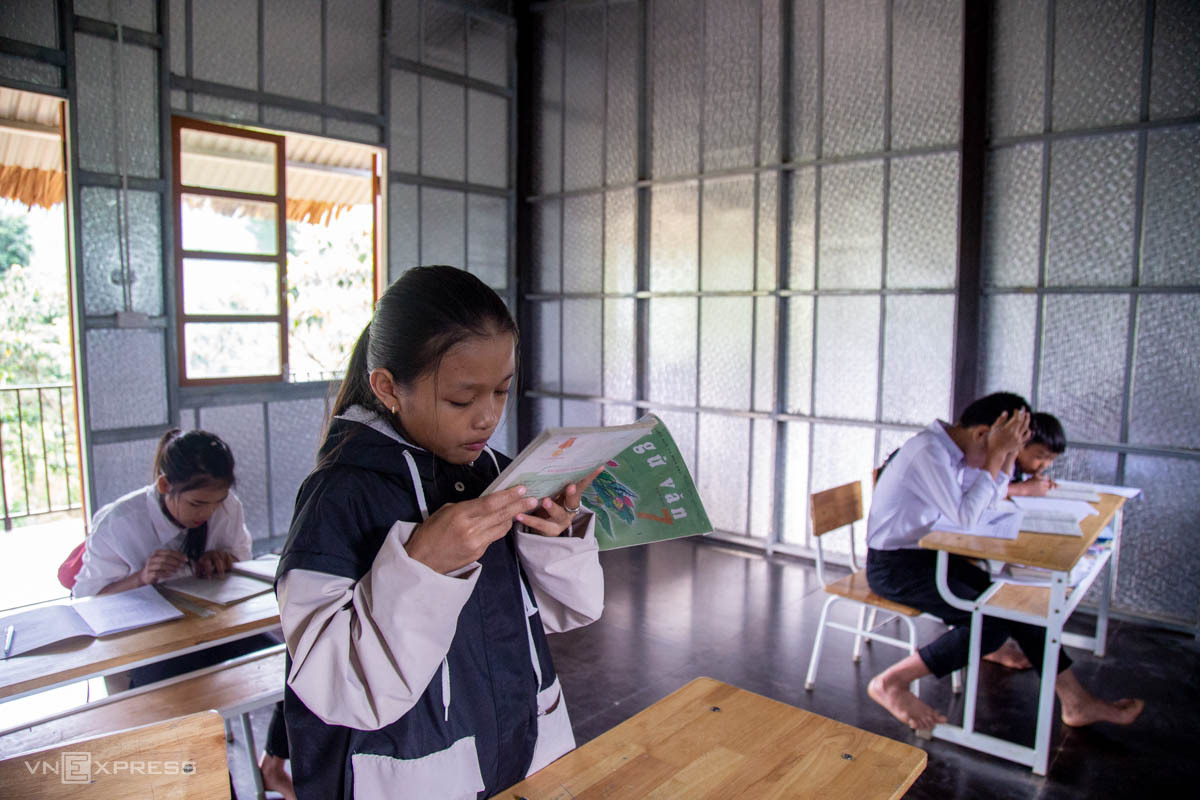Hoang Van Sau has spent the last 12 years teaching in a remote village inside a national park in the central Quang Binh Province.
He was 42 when he set up the first classroom in Doong village in 2010.
The village, which sprung up in the 1990s in the Phong Nha-Ke Bang National Park, is 40 km away from Tan Trach Commune by road and an hour away by foot through the forest from the Km35 point on the Ho Chi Minh Road.
Sau walked through the forest the first time. When he first came to the village, it was completely cut off from the outside world, and had neither electricity nor cellphone signals.
To say it was a challenge to set up a class there is an understatement. There were no desks, books or a place for teachers to stay in the beginning.
“I had to rely on locals for help, both for a place to live and to teach,” Sau says.
He did not have the trust of village officials in the beginning, and asked to teach for three to six months so that the villagers could see how education would benefit their lives, he says.
His first class began with six students.
 |
|
Students clean up the school yard before entering classes in Doong Village, Quang Binh. Photo by VnExpress/Hoang Tao |
In October 2010, even as the villagers were helping Sau put up a temporary school, a flood that lasted four days swept everything away.
Sau then left the place to seek help, asking charity groups to contribute to help the school and the village.
While waiting for the school to be rebuilt, Sau asked the Tan Trach Commune people’s committee for a tent to use as a classroom. While the tent was warm in winter, it was hellish in summer, and so Sau and his students had to go to a local’s house to continue.
Even when there were only six students, some wanted to drop out. Every time someone wanted to quit, Sau went to their house and persuaded them to stay.
“I had neither the physical strength nor the money, so I wanted to help these people with knowledge,” he says.
“I went to their houses to teach them how to do business, how to develop themselves, how to live.”
He eventually gained the villagers’ trust, and they began to send their children to his class.
 |
|
Hoang Van Sau in a classroom. Photo by VnExpress/Hoang Tao |
After the first year two students quit and his class only had four left. In the third year Sau opened another class with four students, and taught them by himself.
Classes were held from morning to night, with Sau securing a flashlight to his head to teach in the dark.
“The students’ parents could not help them study at home, and so they came to class at night to revise what they had learned.”
Six years later, when his first batch of students entered middle school, Sau got help: Three other teachers were dispatched to Sau’s school to teach the children.
In the last 12 years Sau’s school has been damaged by floods three times. In October 2020 everything was swept away, but thanks to local authorities and charity groups, a new school was built at the highest possible spot and reinforced with steel. It had become a fortress safeguarding the village’s education.
 |
|
One of the classrooms in Sau’s school. Photo by VnExpress/Hoang Tao |
This year the school has four classes with 17 students in first to ninth grades (except fifth) and four teachers.
There are also four children in kindergarten so that they can get used to studying in the school in future.
The students are improving as well. Two of them came second in a science and technology innovation contest at district level.
Sau often buys foodfor the villagers from the market in the lowlands every time he visits his family.
“The villagers lack many basic necessities like salt, spices to rice. I buy them and bring them with me to the village.
“If they have to buy them themselves, it would take an entire day since they have to cross the forest. With the fuel cost, the prices of the spices could be double.”
- Reduce Hair Loss with PURA D’OR Gold Label Shampoo
- Castor Oil Has Made a “Huge” Difference With Hair and Brow Growth
- Excessive hair loss in men: Signs of illness that cannot be subjective
- Dịch Vụ SEO Website ở Los Angeles, CA: đưa trang web doanh nghiệp bạn lên top Google
- Nails Salon Sierra Madre
 VnExpress News The News Gateway of Vietnam
VnExpress News The News Gateway of Vietnam





